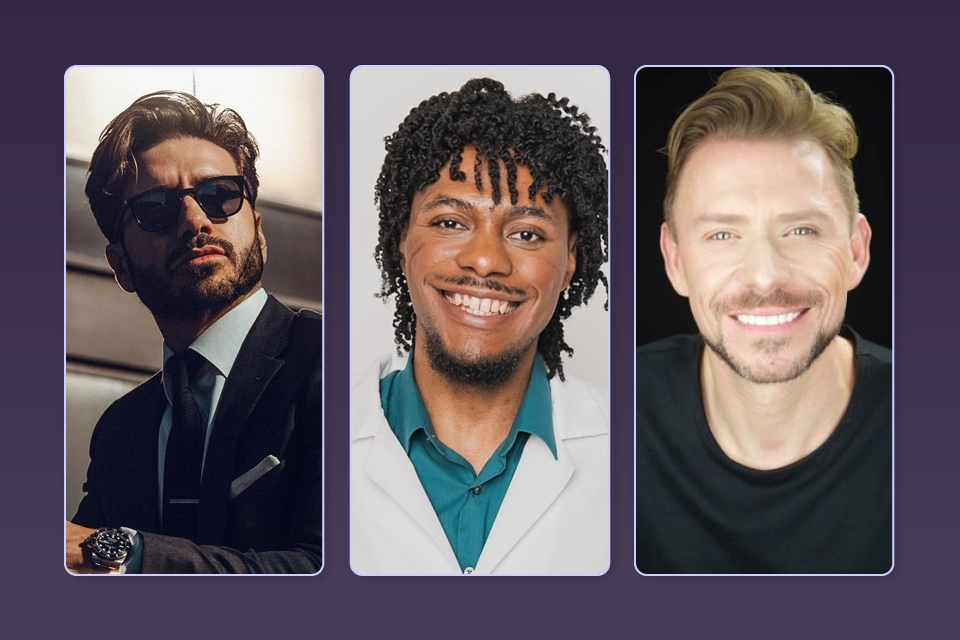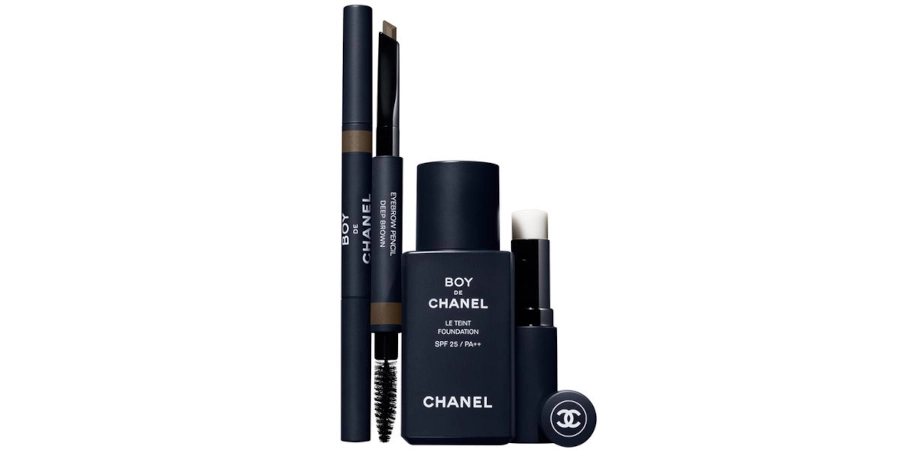Advertising cosmetics to men is a relatively modern development in our sociocultural timeline. While grooming has always been essential, cosmetics and men weren’t always a match culturally accepted. This precipitated a long-standing disconnect between men and this market, which, until recently, was predominantly women-dominant.
The use of makeup for men can be traced back to Ancient Egypt and has fallen in and out of public favor. However, its causal use is now fast becoming a norm. Thanks to societal evolution and the progressive blurring of gender norms, the male cosmetics industry has been witnessing steady growth. The modern era has seen personal care breaking free of its traditionally feminine association. As a result, the men’s cosmetics market has evolved into a lucrative opportunity for beauty brands.
Today, the beauty industry is becoming more inclusive. In fact, the personal care market for men is projected to hit $276.9 billion by 2030.
Brands now understand the untapped potential in the male consumer market, reflected in the estimated worth of men’s skincare products alone in 2023 at about $15.08 million. These changing trends and the growing market potential have redefined the cosmetics industry’s approach, making beauty no longer just a woman’s affair.

Here are two recent campaigns that revolutionized how men view cosmetics and how society perceives them using cosmetics.
Gillette’s ad campaign, “We Believe,” profoundly challenged the archetypal attributes associated with masculinity. It aimed at debunking the “toxic masculinity” myths, a brave and progressive move for a brand synonymous with “The Best a Man Can Get.” Although it initially faced backlash, it achieved the goal of addressing the changing male consumerism in the 21st century.

Image via Harper’s BAZAAR
Chanel’s “Boy de Chanel” line created a definitive marketplace for men in the world of cosmetics. It effectively dispelled the notion of beauty being a gender-specific domain and paved the way for the acceptance of men’s cosmetic products in mainstream fashion. The line includes essentials like foundation, moisturizing lip balm, and eyebrow pencils. It signals a recognition of the demand for segment-specific beauty and skincare products for men, redefining beauty standards and setting a precedent for the industry.
See Also: GRIN + MCoBeauty Case Study
Influencers marketing to men has been a game-changer. Beauty influencers, just like their female counterparts, have a significant impact on shaping consumer preferences. Here’s a list of the top 10 influencers in the men’s beauty category who are redefining male beauty standards:
A seasoned professional in men’s fashion, grooming, hair care, and lifestyle, Alex Costa, is helping his followers to discover that it’s not only okay but attractive for men to spend time grooming and looking their best.
Being one of the first male beauty influencers in the United Kingdom, Gary Thompson represents a significant voice in men’s beauty. He’s known as The Plastic Boy on his social media platforms. Gary advocates for inclusivity in the beauty industry, often spotlighting products suitable for darker skin tones. He has collaborated with iconic brands like MAC and Maybelline.
Jake-Jamie, also known as The Beauty Boy, has made a name in the beauty industry with his tagline, “Makeup is a one size fits all.” His aim is to revolutionize beauty norms and promote the notion that makeup is not just for women. He regularly shares reviews, tutorials, and tips with his followers. Apart from this, Jake-Jamie has launched beauty products in collaboration with Revolution Beauty.
Fitness model and athlete Simeon Panda incorporates grooming into his bodybuilding work. His content encourages men in the fitness world to consider personal care as a part of their overall health and well-being.
As part of the Queer Eye Fab Five, Jonathan has a major influence on the modern grooming scene. His openness about his grooming routine and self-care practices has inspired many men to pay more attention to their skincare regimens.
A veteran beauty influencer, Wayne Goss offers practical beauty advice and tutorials for both men and women. His candid product reviews are highly trusted in the beauty community.
Javon Ford has consistently stood out for his unapologetic approach to beauty and makeup. With a TikTok following that increases every day, Javon has taken the platform by storm! His authentic reviews and deep dives into ingredient lists of products allow users to connect with him. His catchy, witty content resonates, making him influential in promoting skincare and makeup inclusivity.
Based in South Korea, Edward provides detailed makeup reviews and tutorials focusing on popular Korean beauty products.
Patrick’s glamorous makeup looks and charismatic personality have earned him collaborations with major brands like MAC Cosmetics. His success shows that there is a place for men in the mainstream makeup industry.
With a vibrant and cutting-edge approach to makeup, Bretman Rock has become well-known for his diverse makeup looks and larger-than-life personality. This Hawaii-based influencer consistently challenges conventional notions of beauty and gender norms; his millions of followers engage with him for his creativity, makeup expertise, and humorous undertone. Bretman Rock has garnered partnerships and collaborations with several big-name brands.
Influencers like these create an environment where men feel more comfortable exploring cosmetics. Their followers, numbering in the millions, demonstrate a growing interest in men’s cosmetics.
As we’ve explored, the game of advertising cosmetics to men has begun to shift dramatically. Where once the concept might have seemed unusual, it’s now profoundly shaping our cultural landscape.
This evolution didn’t happen overnight. It took time, societal shifts in understanding gender expression, and a set of daring individuals and brands willing to challenge the norms. Today, more than ever, cosmetics brands understand men’s interest and need for products tailored to their skin, hairstyles, and grooming routines.
The modern man isn’t confined to outdated notions of masculinity. There are no boundaries in color palettes or skincare routines. Beauty influencers like Bretman Rock, Patrick Starrr, and Jonathan Van Ness are helping break down barriers with their diverse styles, opening up a world where everyone can express their individuality.
We can expect the male cosmetics industry to continue thriving and becoming increasingly mainstream. The success of campaigns such as Chanel’s Boy de Chanel or L’Oréal featuring Gary Thompson in their ads presents a clear message: cosmetics are for everyone who wishes to use them, regardless of gender.
Brands considering entering this growing market should consider working with male beauty influencers. Their understanding of the male consumer and their ability to influence purchasing decisions will be vital, ensuring that products align with the needs and wants of a newer, more modern audience.
It’s a bold new world for cosmetics brands. Now is the time to discover and harness new marketing approaches that appeal to this growing and receptive audience. The shift in societal norms, combined with the rising influence of beauty-focused men in the media, promises a lucrative future for those who are willing to embrace it.
The male cosmetics industry’s transformation signals a notable shift in societal norms around gender and self-care. Brands like Chanel and various influential figures are pioneering this change with gender-neutral product lines and impactful messaging. Embracing and promoting this trend could unlock new opportunities in the evolving beauty market.
Are you ready to stake your claim in the creator economy? Discover more helpful tips and resources from the experts at GRIN: Creator Management Learning Center
Our team keeps a finger on the pulse, so you’re always working with the latest information.